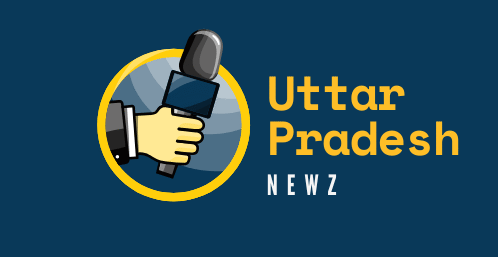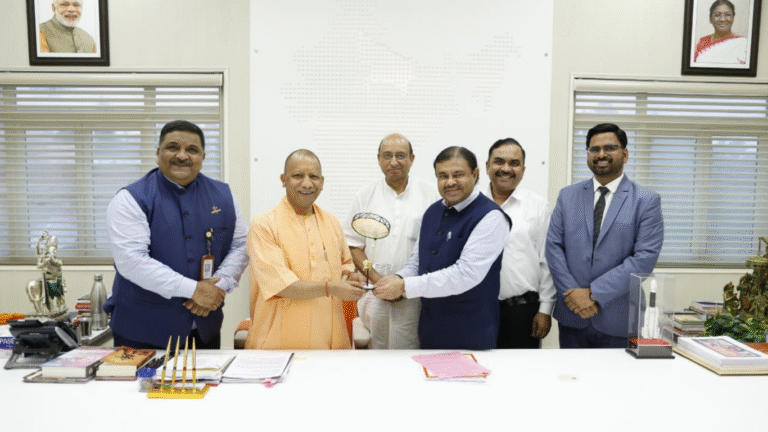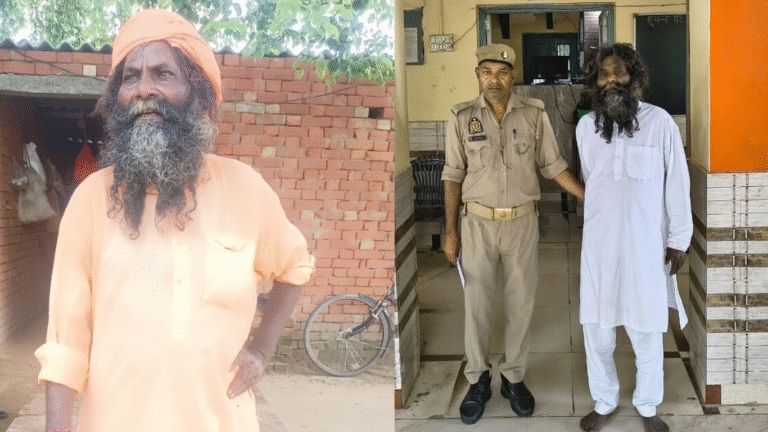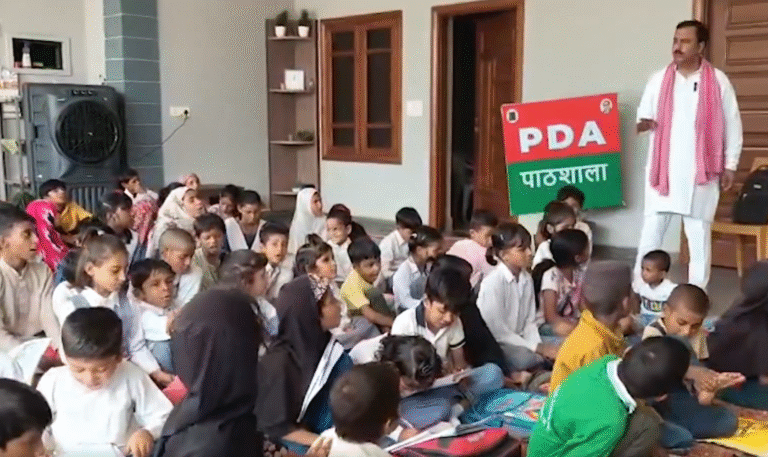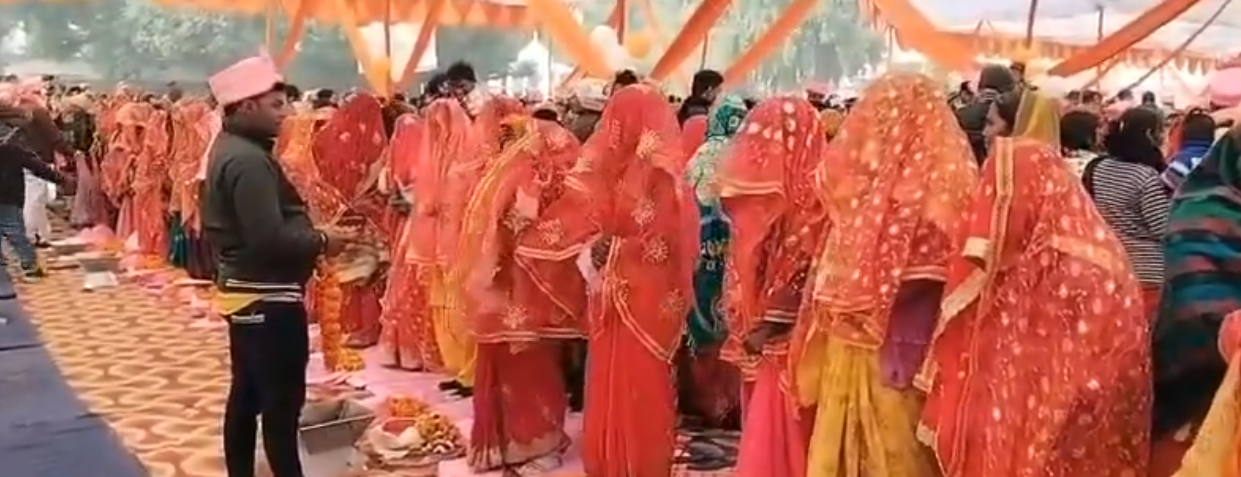
Since its launch in 2017, Uttar Pradesh’s Mukhyamantri Samuhik Vivah Yojana (Chief Minister’s Mass Marriage Scheme) has steadily evolved into one of the state’s flagship welfare programs. Its updated benefits and widening reach have made it particularly impactful for historically disadvantaged communities.
Major Updates to the Scheme
a. For fiscal year 2025‑26, the income eligibility limit has been raised from ₹2 lakh to ₹3 lakh per year. Each eligible couple now receives a total of ₹1 lakh: ₹60,000 transferred directly into the bride’s account, ₹25,000 worth of home‑gift items, and ₹15,000 for event and logistics support.
b. More recently, biometric and Aadhaar verification at wedding venues has been mandated starting October 2025. This step aims to curb fraud by confirming that both bride and groom are genuine beneficiaries and have not received support earlier.
c. To improve quality and fairness, officials will now use only empanelled agencies—appointed through e‑tendering or GeM—to supply standardised gift kits (24 items including sarees, silver jewellery, utensils, bedding, fan, etc.) under strict oversight by district authorities.
Who Has Benefited Most?
Data from government sources and recent events point to a clear beneficiary group:
a. Dalit community (Scheduled Castes): Over 2.20 lakh brides from Dalit households have benefited since the scheme began. This is the single largest beneficiary group in both absolute and proportional terms.
b. Other Backward Classes (OBC): Around 1.30 lakh brides from backward-class families have also received assistance under the scheme.
c. Minority communities: More than 40,000 brides from Muslim, Christian, Sikh and other minority groups have participated so far.
Thus, Dalits have emerged as the single largest beneficiary group, followed by backward-class communities and then minorities. Numbers clearly reflect this ranking.
Recent Celebrations and Social Impact
In a grand mass wedding event in Gorakhpur on May 27, 2025, over 1,200 couples were officially married under the scheme. Chief Minister Yogi Adityanath graced the occasion and distributed gifts to the newly-weds, reiterating the vision of the program as a tool against dowry, child marriage and caste barriers. Officials confirmed attendees included families from all castes, religions, and social groups.
District administrations in Lucknow, Prayagraj, Meerut, Agra, Jhansi and beyond are actively conducting outreach and field verification to ensure transparency in beneficiary selection and maximum inclusion of needy families.
Why Dalits Gained the Most
There are two key reasons why Dalit women represent the largest beneficiary cohort:
1. Targeted priority: At the time of scheme design, Scheduled Castes were prioritized as the most disadvantaged group. The scheme’s outreach and selection protocols widely cover Dalit households.
2. Higher awareness and uptake: Social welfare teams and local bodies have worked extensively in Dalit-majority villages, leading to greater coverage and higher application rates.
Final Word
In summary, Dalit women have benefited the most from the Uttar Pradesh mass marriage scheme, with over 2.20 lakh brides married under this program. Other backward-class families have also received sizeable aid, while minority communities, though less in number, have still gained meaningful support. The scheme’s recent enhancements—higher assistance, strict verification, and quality control—highlight efforts to ensure fairness and dignity in support to the poorest families.
